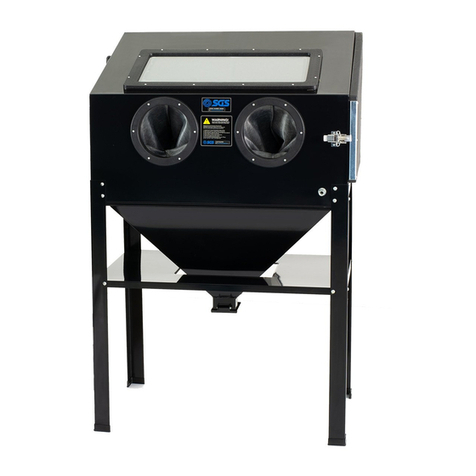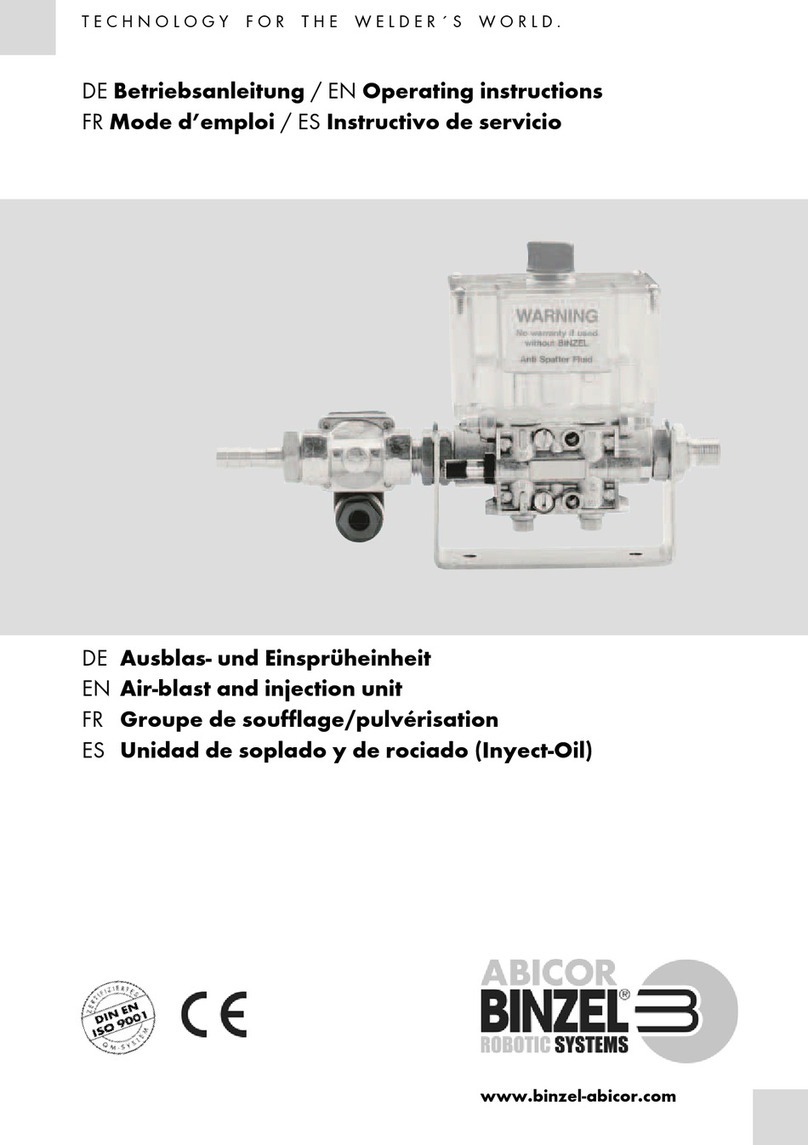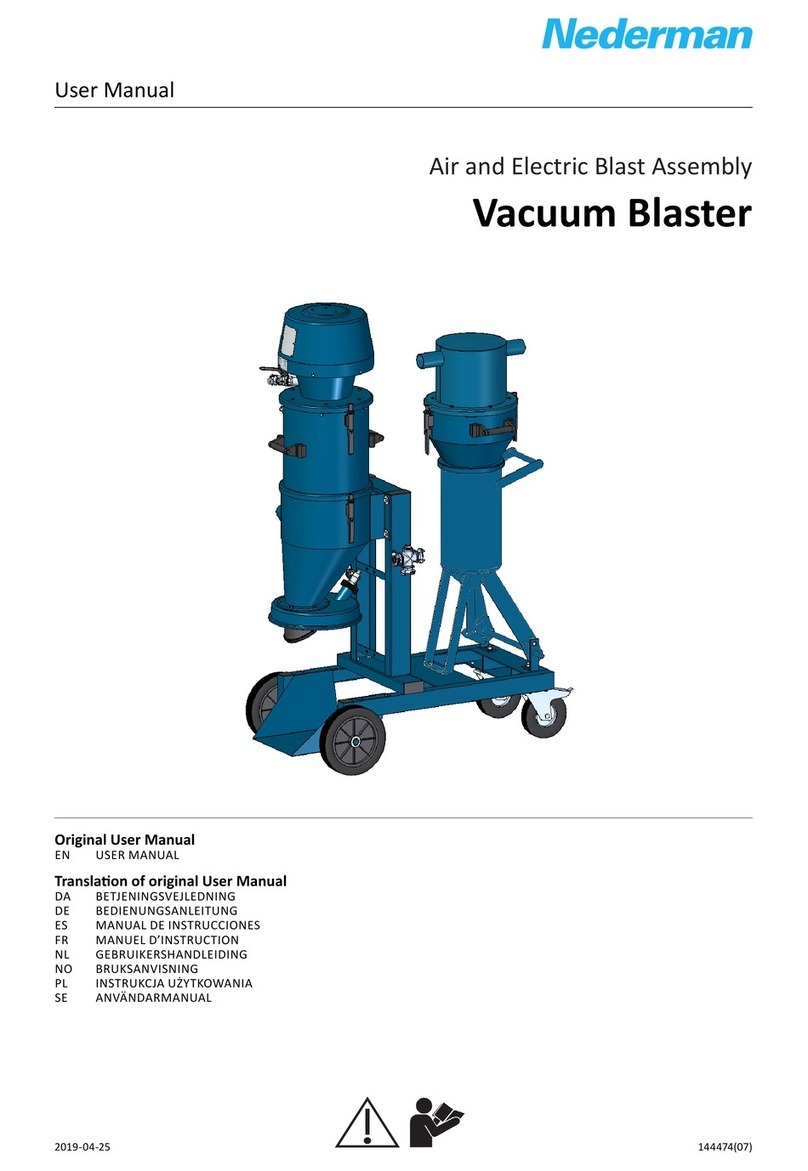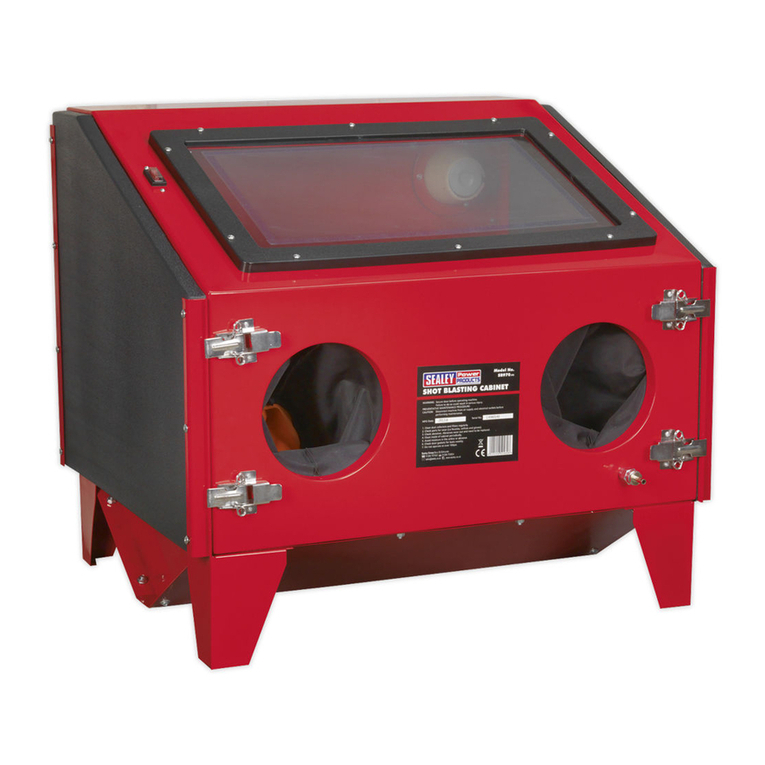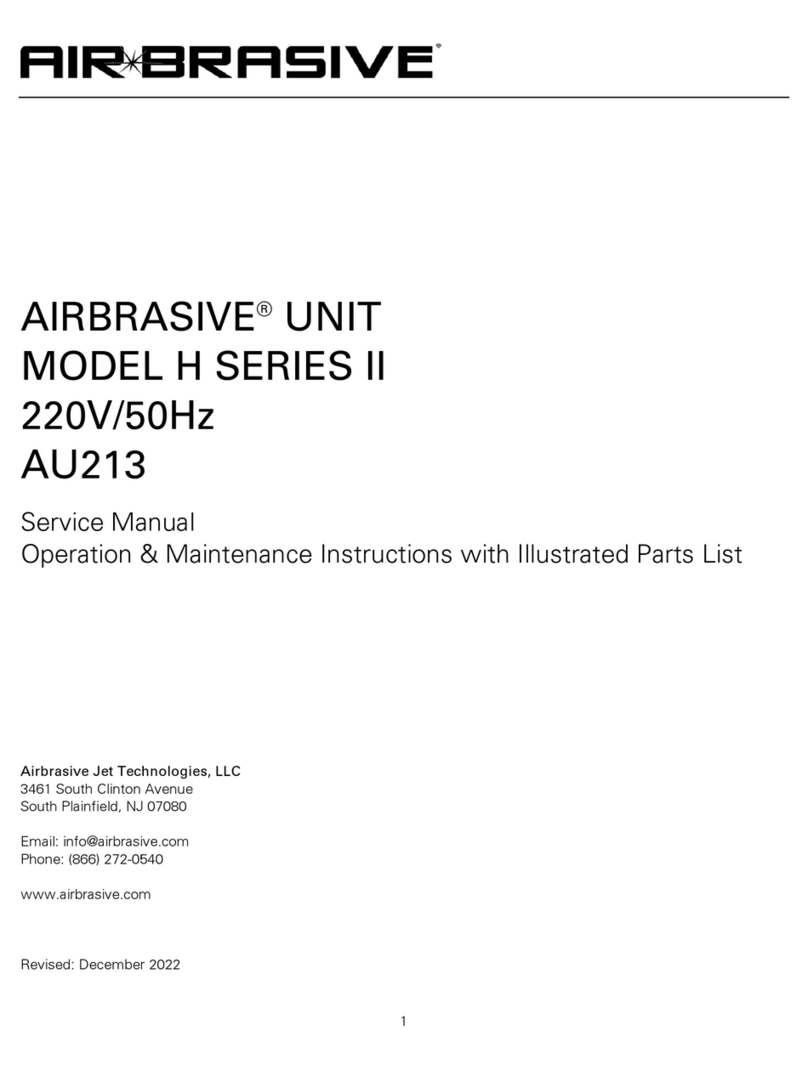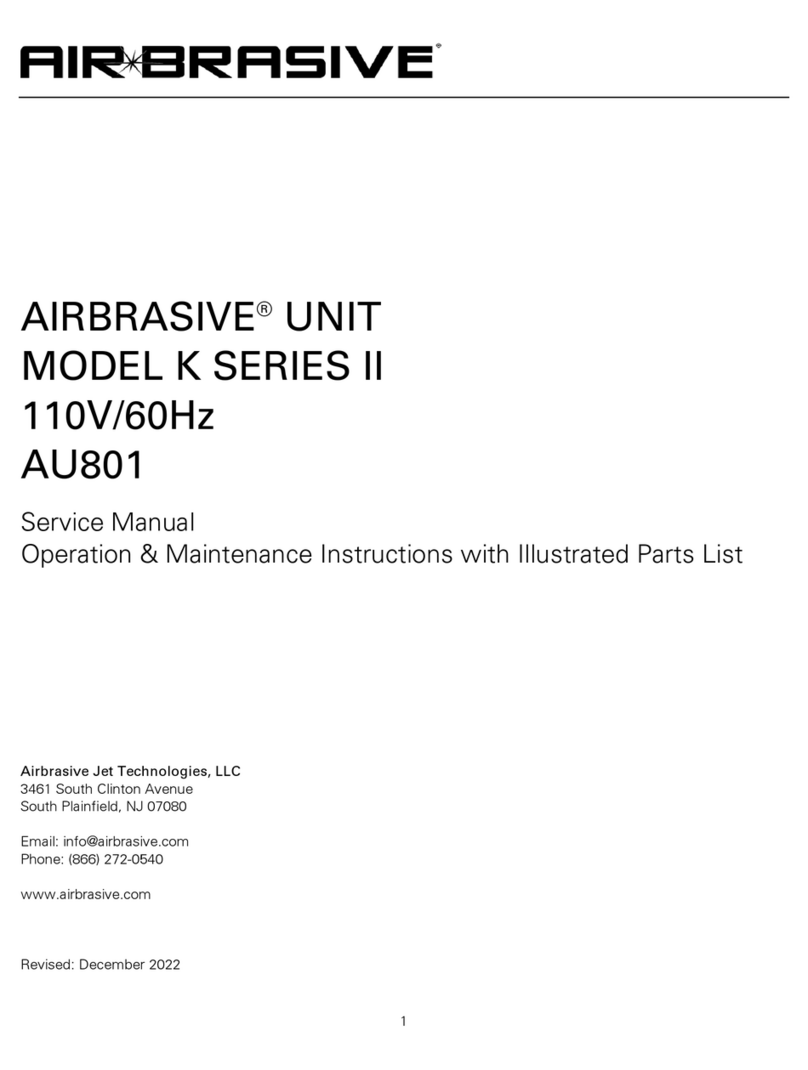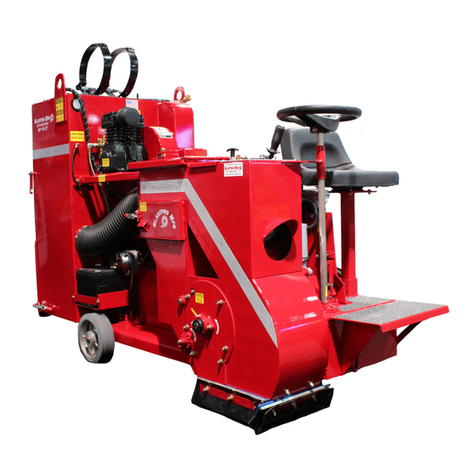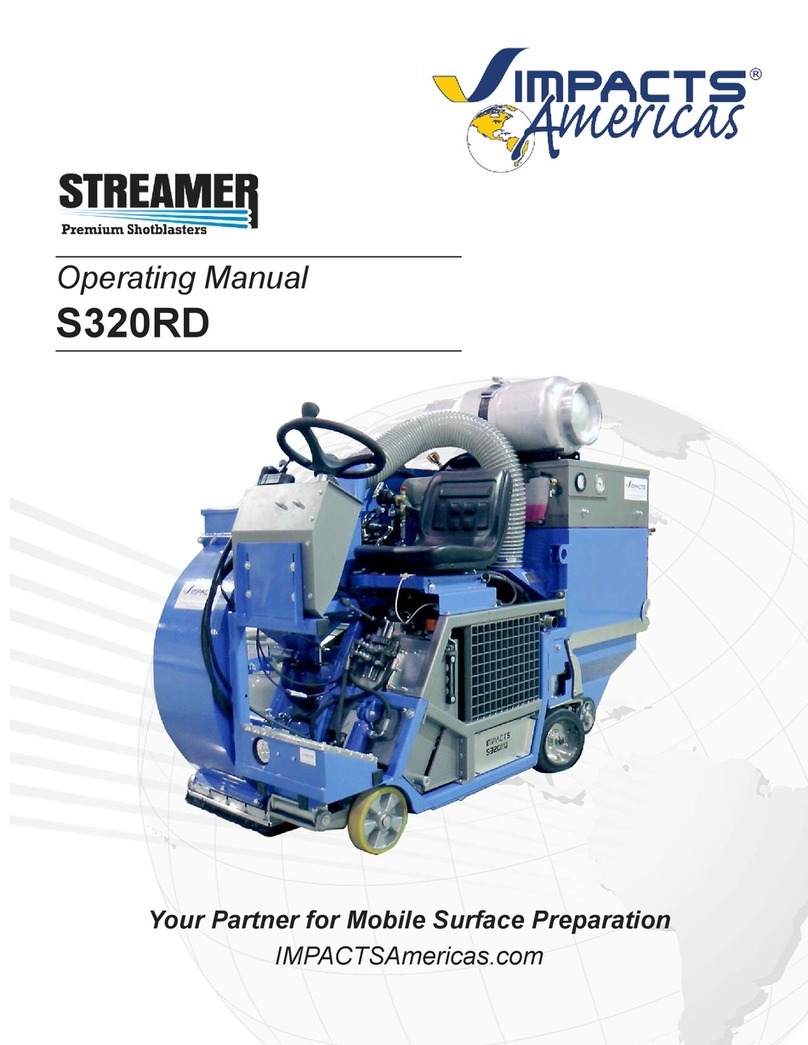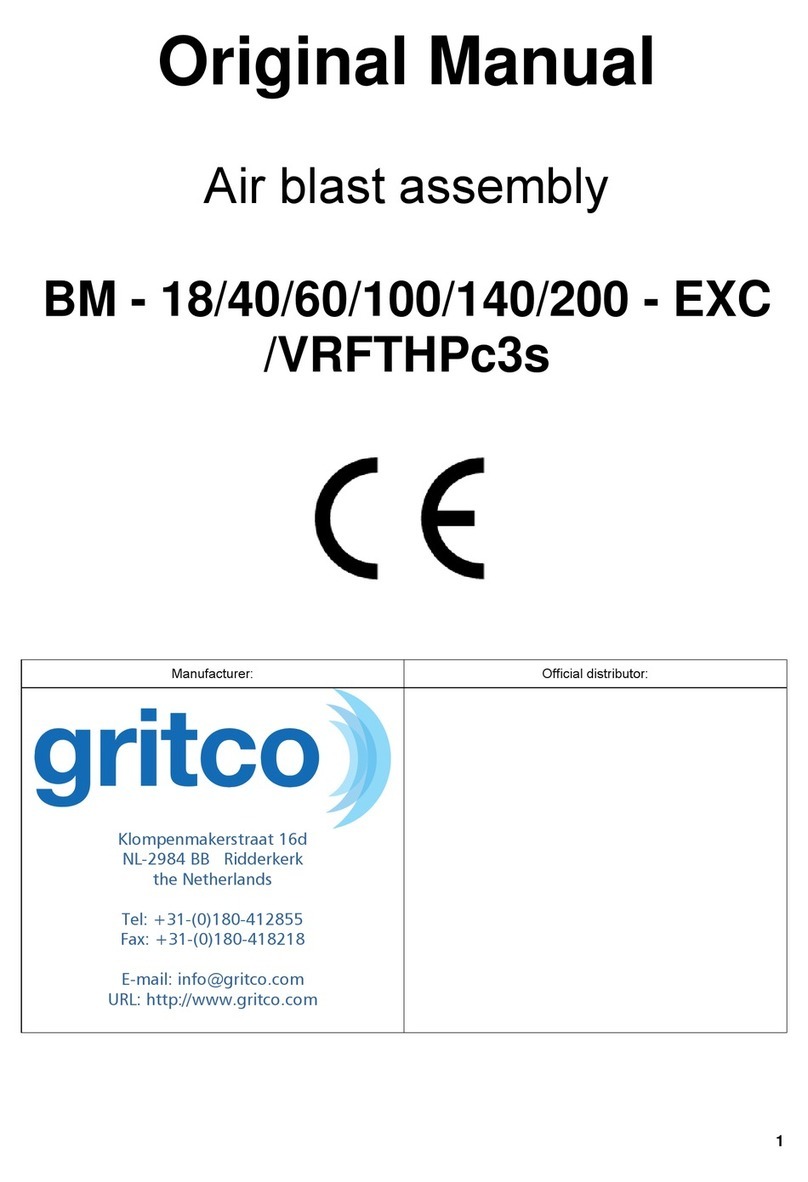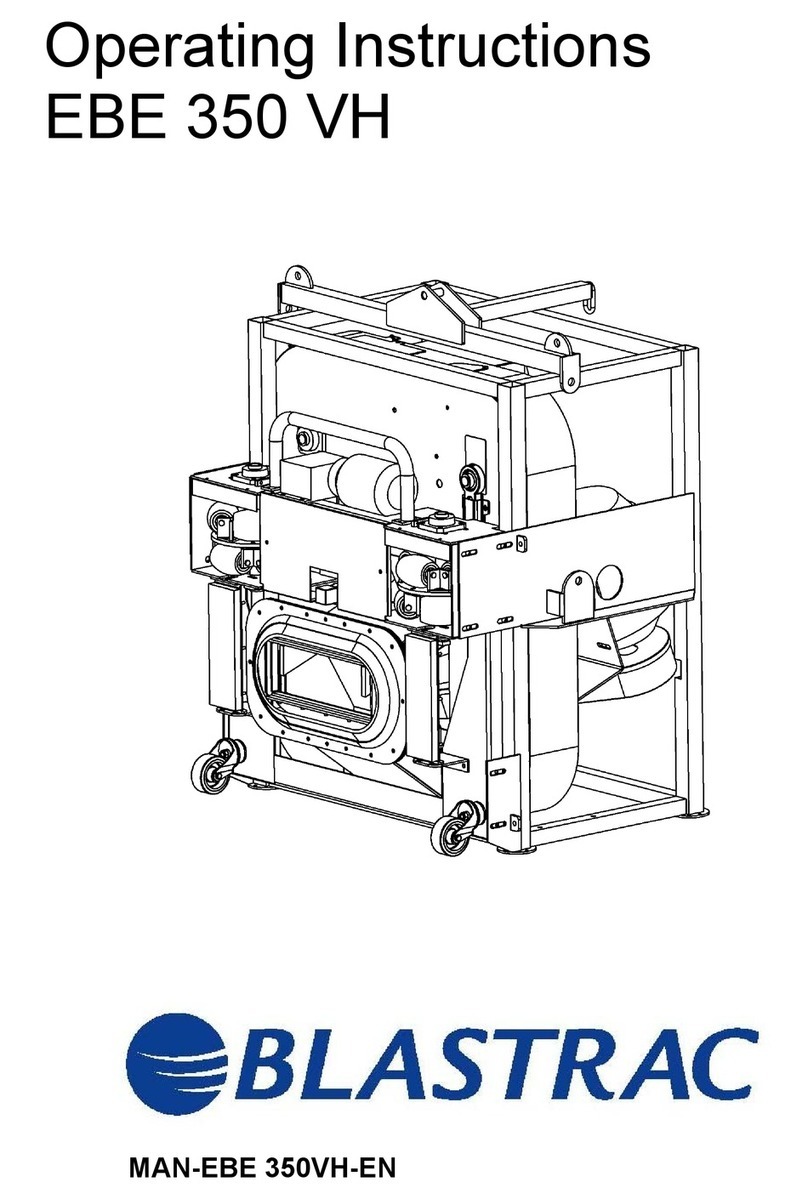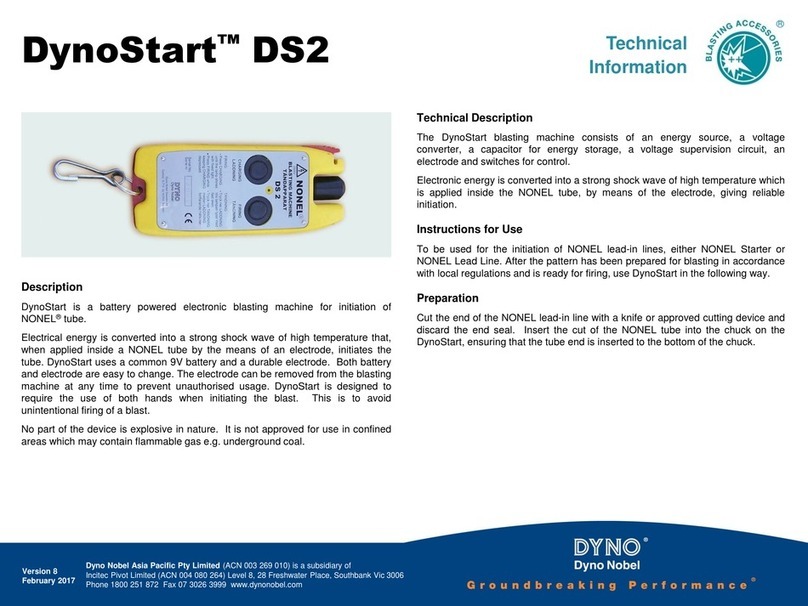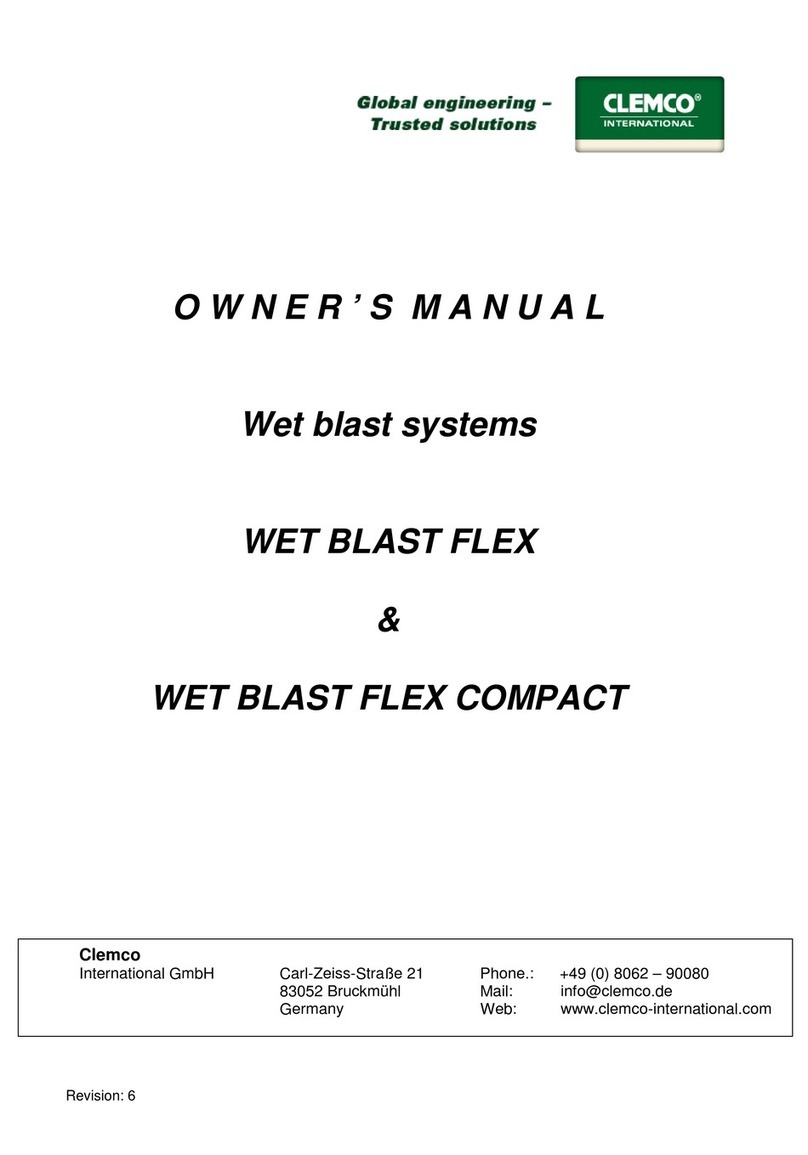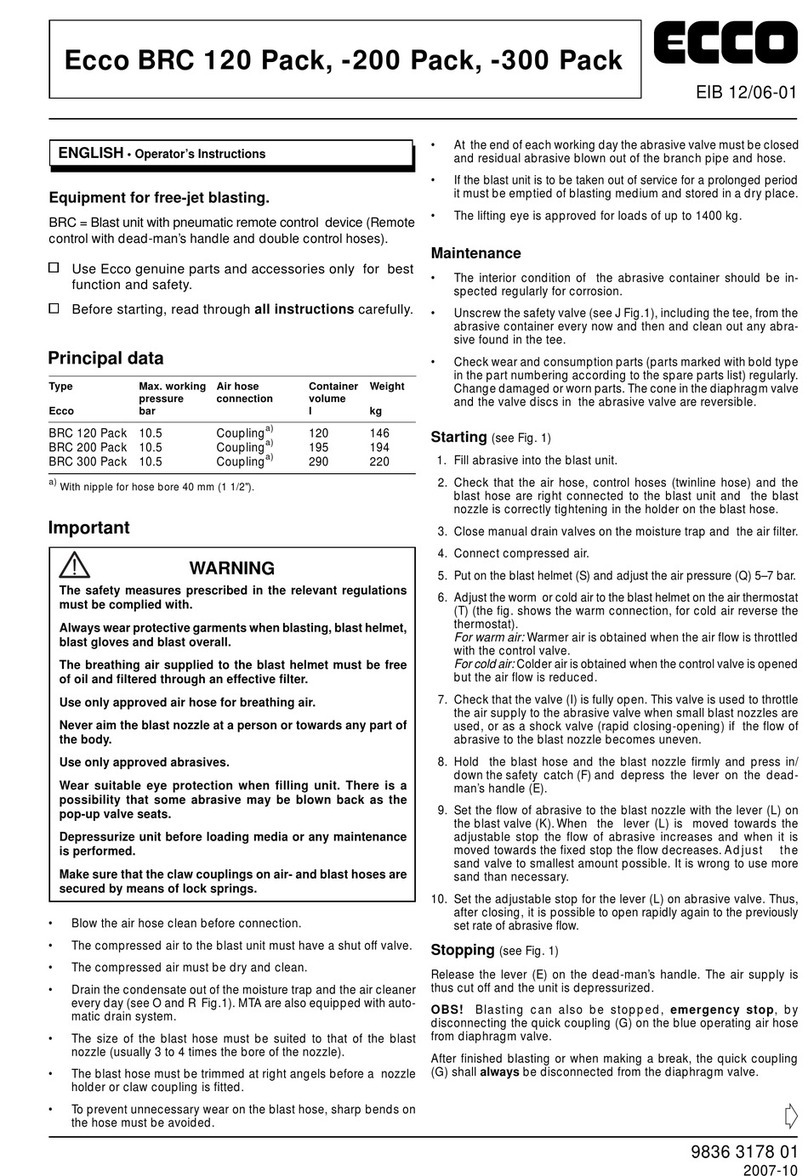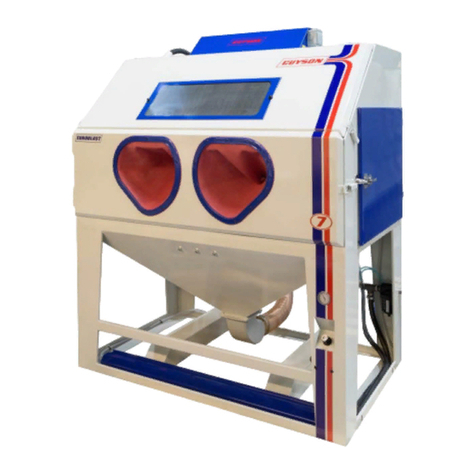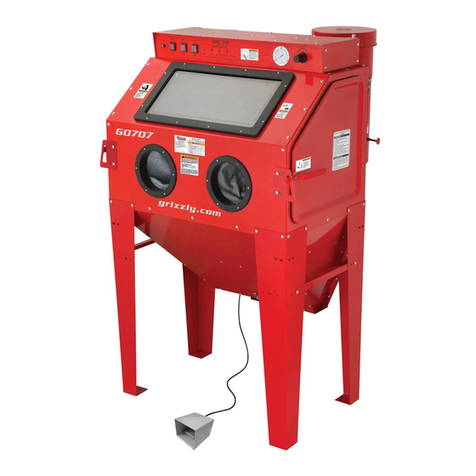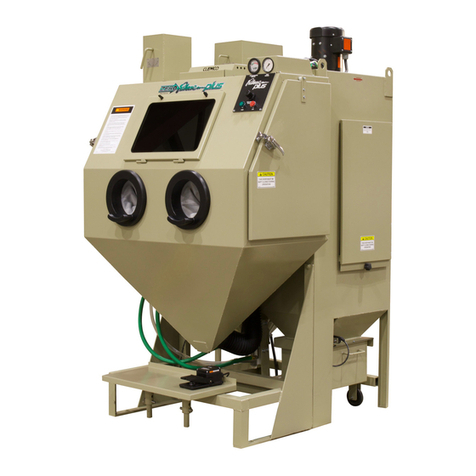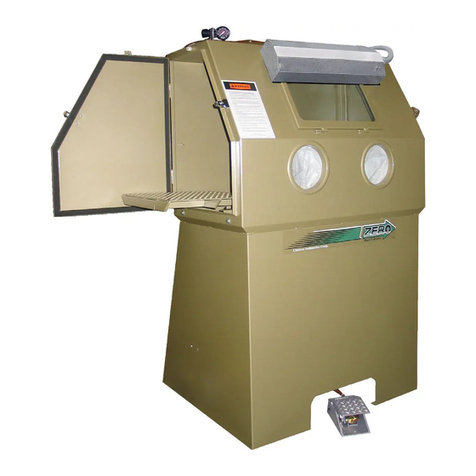2
Overview
AIRBRASIVE® MICRO ABRASIVE BLASTING TECHNOLOGY
Airbrasive® Jet Machining is a process in which high pressure air and very fine powder are blended in a chamber to form
an abrasive mixture. This mixture is then sent through a small, precisely machined nozzle. The result is a highly accurate
abrasive stream that can be used for cleaning, cutting, drilling, deburring, and finishing all types of surfaces. Airbrasive®
Machines have limitless applications. These highly engineered machines are incredibly versatile. They have the power to
cut and drill materials as hard as diamonds, as well as the precision to delicately clean debris from ancient papyrus
documents.
OPERATING PRINCIPLES
The Airbrasive® Machine is capable of many cutting and abrading tasks. From cutting very hard materials such as diamonds
to cleaning extremely delicate items like fabric or paper. The key to taking advantage of its versatility is the knowledge of
how it cuts. Knowing this, you can properly set the various controls to achieve your desired cutting results. There are six
key variables involved in the cutting process. 1) Air Pressure, 2) Powder Flow Rate, 3) Nozzle Size, 4) Type of Powder, 5)
Nozzle Distance from work piece, and 6) Angle of Impingement.
AIR PRESSURE
The air pressure is directly related to the velocity of the powder particles striking your work piece. The higher the air
pressure the faster the particles and the greater the cutting speed. The lower the pressure the, lower the cutting speed.
This is not a linear correlation. There are certain critical points you will notice as you experiment with different air pressure
settings. When the particle velocity falls below a certain level the cutting action may suddenly stop altogether. Similarly, a
small increase in air pressure may gain a large increase in cutting action. The air pressure is limited at the high end by safety
concerns and by what your main air supply can produce.
The unit should never be pressurized beyond 140 PSI!
POWDER FLOW RATE
The amount of powder exiting the nozzle per minute is referred to as the flow rate. The greater the flow rate, the greater
the cutting action. To achieve the better cutting action with higher powder flow rates, it is often necessary to increase the
air pressure. This is done to maintain particle velocity which tends to slow down as the mass the air stream must carry
increases. Cutting action will decrease quickly at very high powder flow rates. This is due to interference between the
powder particles bouncing off the work piece and those coming out of the nozzle. Some brief experimentation at these
high flow rates will quickly reveal your limits.
NOZZLE SIZE
Nozzle orifices are shaped to be either round or rectangular. The nozzle widths vary in size from .005 up to .032 inches.
The size of the nozzle determines the area that will be impacted by the powder. The larger the nozzle, the greater the area.
The shape of the nozzle is important for getting into unusually shaped spaces. A rectangular nozzle can lightly cover a large
width or, when turned, heavily impact a narrow space.
TYPE OF POWDER
The cutting powder is the most important variable in the "Airbrasive" process. It determines the severity with which you
will impact your part. Some powders are designed for aggressive removal of material while others for a gentle cleaning. To
achieve consistent, sputter free smooth flow it is necessary to use uniformly sized powder. If the powder particles vary in
size, even a little, the powder will tend to clump together. This happens because the smaller particles fill in the gaps
between the larger particles, effectively locking them all together. If all the particles are of the same size, then this locking
action cannot take place.
NOZZLE DISTANCE TO WORKPIECE
The distance you hold the nozzle from the work piece plays a large part in determining the area covered as well as the
cutting rate.
